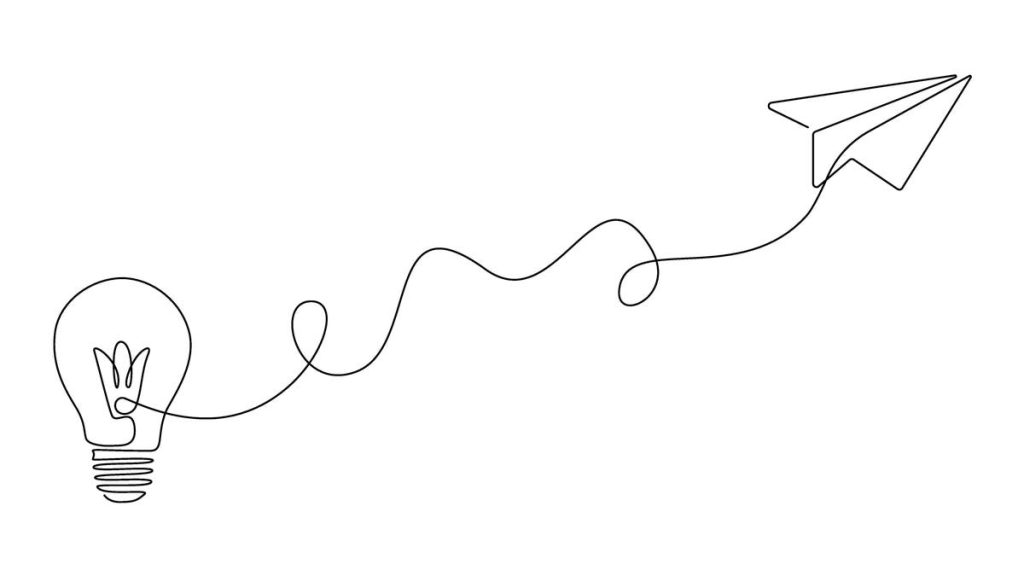You like potato and I like potatoe, You like tomato and I like tomatoe;
Potato, potatoe, tomato, tomatoe! Let’s call the whole thing off!
Brothers George and Ira Gershwin wrote the song “Let’s Call the Whole Thing Off” for Fred Astaire and Ginger Rogers’ memorable roller-skating duet in the 1937 film Shall We Dance, in which the couple’s disagreement over pronunciation is the reflection of greater troubles in their relationship.
While most Americans and Brits will agree that these dinner-table staples are the same thing no matter how you pronounce them, the same is not true of digital technology and innovation. Despite often being used synonymously they are not the same, and focusing too much on digital technology at the expense of innovation can prevent organizations from reaching their full innovation potential. Sources as varied as The United Nations Refugee Agency and blog site The Magical Trip have weighed in, yet it can be difficult to understand the difference and why digital technology and innovation both are important. But no need to call the whole thing off – here’s how to put digital technology and innovation into context to best promote innovation in your organization.
Britannica formally defines technology as “the application of scientific knowledge to the practical aims of human life or, as it is sometimes phrased, to the change and manipulation of the human environment.” With the blurring of lines between the physical and digital world that have occurred as part of the Fourth Industrial, so, too, have lines been blurred between use of the words technology and digital technology, such that an assumption is often made that all new technology involves the use of computers, networks, or the internet of things (IoT).
One commonly accepted definition of innovation, on the other hand, is “the introduction of new things, ideas or ways of doing something”(Oxford Learners Dictionaries). Said another way, innovation is the method by which these new things – sometimes involving digital technology, sometimes not – are developed, introduced, and applied. There is no doubt that innovations such as the wheel, crop rotation, and penicillin changed the world, long before data began to be stored in 0s and 1s.
Innovation mindset is what brings new things, ideas, and ways of doing something to life – being unwilling to accept the status quo, constantly pushing for improvement, and being impatient. Non-digital innovation can be as simple as a change in business process – empowering customer-facing employees to issue refunds without a manager’s approval, for example. Or it can be as lifesaving as the Apollo 13 crew’s use of duct tape, cardboard, a plastic bag, and a spacesuit hose to repair a connection to the CO2 scrubbers and save the men and the mission.
While it may be tempting to focus on digital technology, corporate and organizational innovation programs do so at their peril. Recognition of non-digital innovation is important to foster an innovation mindset. If these programs recognize, fund, and reward only digital innovation, which is common, many non-digital employees will feel it doesn’t apply to them. They will essentially opt out of innovation, to the detriment of the future of their organization which could have benefited from their innovation contributions, had they been inspired to develop them.
These inspirational non-digital technology innovations range from the everyday, to some changing industries and the world:
· An environmental engineer at Jacobs needed a centrifuge for samples he was taking in the field but didn’t have one. He fashioned a field centrifuge out of a Walmart salad spinner, saving the project schedule.
· Seabees are the U.S. Navy’s combat construction force. Out of necessity, they are outstanding innovators who use creative problem solving to make do with what they have in the field. In addition to everyday expeditionary innovation, one of the most impactful Seabee innovations was use of the standardized steel pontoon, which helped the Allies win World War II when they were used to rapidly construct piers, causeways, and other structures that permitted the landing of forces on enemy
shores.
· A report by McKinsey & Company found that that construction is among the least digitized of all industries. The introduction of the innovative SpeedCore concrete-filled composite steel plate shear wall has led to benefits ranging from reduced schedule, to increased blast resistance, to enhanced safety and improved quality related to construction tolerance issues. The 850-ft. tall Rainier Square Tower in Seattle, Washington, which opened in 2021, took only ten months to top out with this innovative approach.
· PureMadi is a nonprofit organization founded in 2011 through the collaboration of students and professors at the University of Virginia to produce and distribute inexpensive ceramic water treatment in Africa. The filters allow families to clean water in their home through remarkably non-digital innovation that makes use of the natural filtration and disinfection properties of the ceramic and silver materials. The team has continued to innovate, with the latest iteration being a silver-embedded ceramic tablet called MadiDrop+ that is dropped into a 10- to 20-liter water storage container to treat water for a year.
If these examples aren’t enough, you can watch some old MacGyver episodes for similar inspiration! While not everyone needs to fashion a hang glider out of a downed satellite, all of us can certainly find ways to challenge the status quo by innovating in our own areas.
Check out my other columns here.
Read the full article here










